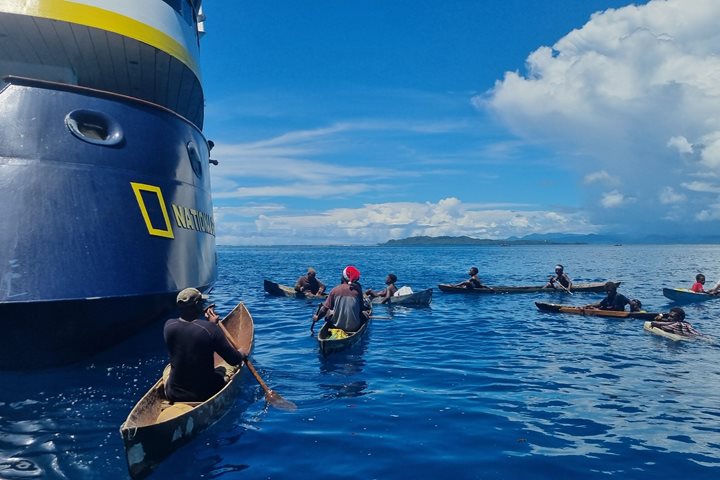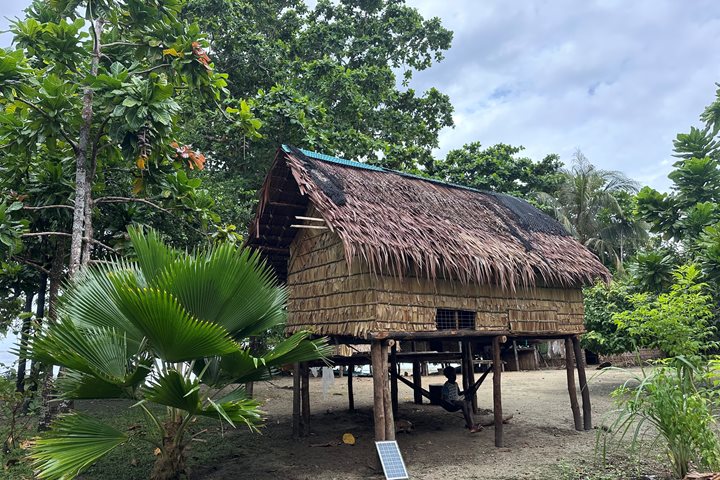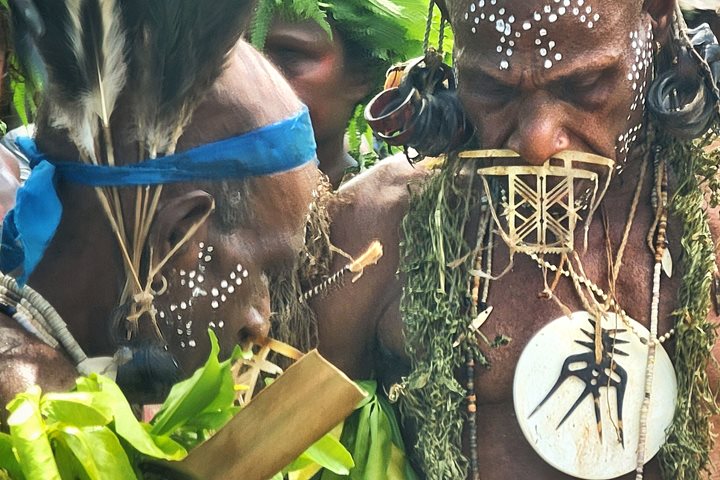Efate, Vanuatu’s third largest and most populous island, brought us to the city of Port Vila. National Geographic Orion anchored on the northwest side of the island. After a choppy twenty-minute Zodiac ride and a forty-minute bus trip, our commute to Port Vila began with a visit to the National Museum of Vanuatu. Edgar Hinge, an expert storyteller from North Pentecost Province, Vanuatu offered us a calming and powerful one-man welcome. Edgar’s stories began with dance, moved to oral storytelling, and progressed to songs from the bamboo flute. The culmination of his performance ended with a sand painting. In 2008, UNESCO added Vanuatu’s sand drawings to the list of Intangible Cultural Heritage of Humanity. These grid-based, continuous line drawings are used to communicate information that is practical, like the weather, to information that is symbolically far-reaching, such as myths and rituals. The lines lead your eyes in swirling repetition. Both viewer and maker are hypnotized by the looping patterns that begin quite simply and end in the depths of a more complex whole. It seems to me as if all design derives inspiration from the palm frond weavings.
Port Vila’s waterfront, dense with stores, tourists, cars, and markets, was our second stop. On foot, we made our way through rows of produce and clusters of people. The vibrant patchwork of fruits and vegetables transitioned to a series of open-air food stalls. I craved more time here. Food is a language to help us breach communication gaps. Farther along the waterfront and at our final stop in Port Vila, we meandered through stalls of artisans in the handicraft market. A couple stalls in, I met Frances. Like Edgar, Frances hailed from Pentecost Province. I bought a woven mat from her for my daughter, whose college major is in fashion and textiles. It was a miniature version of the three-meter Sese mat specific to the island of Ambae. The Sese mats serve as a form of currency and are a source of significant cultural heritage. Objects on the mats mark geographic space and time, like maps. A red design on a white background provides the essential place marker. The pattern is made from a stencil cut from the outer layers of a banana trunk. The dye is rolled over the surface of the mat once the stencil is placed on the blank weaving. The red pigment is harvested from the roots of the Laba vine. With great effort, it is extracted from the volcanic earth.
The mat I bought took Frances a week to make. Her small baskets consume two hours of her time to weave. Her market bags require six to seven hours, depending on their complexity. As a single mother, she supports her two children with her earnings. Her fingers cramp up more and more as she ages, an inevitable byproduct of the repetition. Our art and cultural heritage move us beyond the limits of our bodies towards the spirit present in all life.







